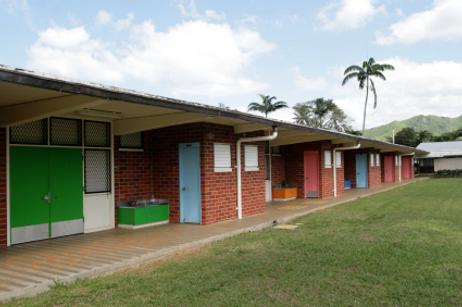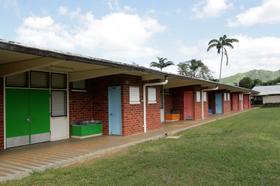The public school system for the Islands of Hawaii is unique in many different respects. First, it is the largest school district west of the Mississippi River. Second, it is the only district that encompasses the entire state, rather than representing a single, defined area of that state. The Hawaii Department of Education is also one of the oldest public school systems west of the Mississippi, with an establishment date that goes all the way back to the middle of the 19th century.
This video looks at the state of Hawaii's public schools.
Facts and Figures in the Aloha State
Wikipedia states that the Hawaii public school system was first established in 1840, under the monarchy of Kamehameha III. The system grew throughout many decades, and today, the Hawaii Department of Education oversees 286 schools. The department employs approximately 13,000 teachers to instruct more than 180,000 students each year. The majority of the schools are located on Oahu, with the rest spread throughout Maui, Big Island, and Kauai. The district headquarters is also located in Honolulu, on the Island of Oahu.
The Hawaii Department of Education includes 32 charter schools in its total number of public schools. The district has a per-pupil expenditure of more than $11,000, which is relatively high compared to many of the school districts throughout the United States. The Department of Education’s states that funding for the school district comes through state and federal funding, special funding, and trust funds set up for this purpose.
Governance of the Hawaii Department of Education is managed by a nine-member school board. All of the board members are appointed by the governor. The board is responsible for choosing and hiring a superintendent to oversee the school district. Currently, the superintendent of the Hawaii Department of Education is Kathryn Matayoshi, who was appointed by the board on September 13, 2010. Prior to that permanent appointment, Matayoshi served as deputy superintendent and interim superintendent. Matayoshi is a graduate of Hilo High School in Hilo, Hawaii, according to the school district’s website.
This video offers a look at Hawaii's culture-based learning.
Services Offered by the Hawaii Department of Education
To ensure all of the students within this large district receive the educational opportunities they need to succeed, the Hawaii Department of Education makes a number of special services available. For students who want to get more from the academic experience, the district offers online courses to supplement the traditional classroom experience. offers “standards-based, online classes for Hawaii students,” the e-School website states. Students who want to participate in e-School must be able to meet the technical requirements and show consistent attendance in their e-classrooms.
For students with disabilities, the Hawaii Department of Education also provides the Hawaii School for the Deaf and Blind. This center is located in Honolulu and offers special services to disabled students from the pre-K years through high school. The school features an extensive campus that includes student dormitories so that students benefit from a full immersion experience. According to the for school, both English and ASL (American Sign Language) are used in the instruction of students.
For all students in Hawaii that require a bit of extra help from time to time, the Comprehensive Student Support System is available. This program offers support for students who might be struggling academically, with standards-based learning that helps to ensure all students on the Islands will meet their full academic potential. The system works through collaboration between the district, parents, and the community at large.
Â鶹ąű¶ł´«Ă˝ Debates within the System
While the Hawaii Department of Education boasts the only statewide school district, there has been debate over whether this structure is really the best way to continue to serve Hawaii’s growing student population. Some believe that the Department of Education should be split into separate districts, allowing governance of those districts to remain closer to the schools they serve. On the other hand, maintaining a statewide system ensures all schools receive an equal portion of funding and resources so that the quality of schools throughout the Islands remains consistent.
While no decision has been made on this debate at this time, Superintendent Matayoshi has implemented some restructuring within the administration of the school district. reported last year that the superintendent divided the operations and academics offices within the Department of Education, providing a chief to oversee each of these areas. The 27 employees that originally reported directly to the superintendent will now be divided between the two office heads, freeing up the superintendent’s time for strategizing and planning for the entire district.
This video offers an over of PreK-12 education in Hawaii.
The purpose of the restructuring was to ensure the superintendent was able to focus on statewide student achievement, according to the goals of the national program Race to the Top. The new governance model will also allow the superintendent to oversee the implementation of Common Core academic standards throughout the district. All of these changes were necessary after the Hawaii Department of Education applied for and was granted a waiver releasing the district from the No Child Left Behind requirements.
In addition to the new structuring, the recently awarded grants to the Hawaii school system totaling $11 million. The funding will be used to support projects and educational services to native Hawaiians, in order to preserve the unique history and culture of the Islands. With many programs and changes working for the Hawaii Department of Education today, there is much pride and optimism within the state that the public school system offered to Hawaiian students will adeptly and effectively prepare them for the future.
Questions. Contact us on Facebook. @publicschoolreview















